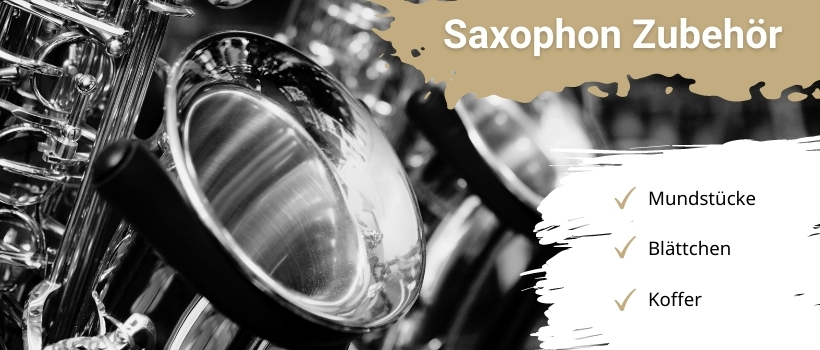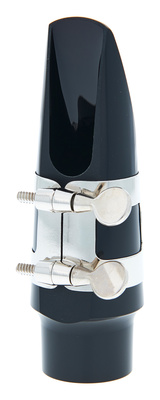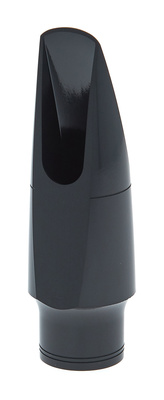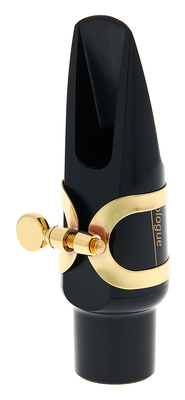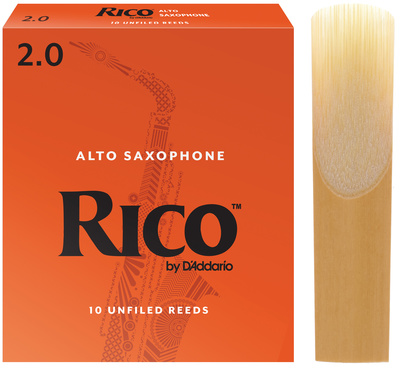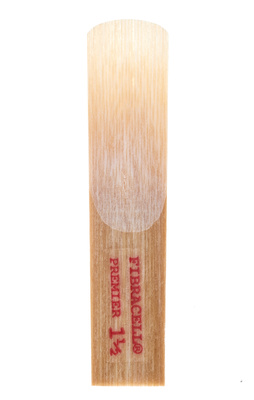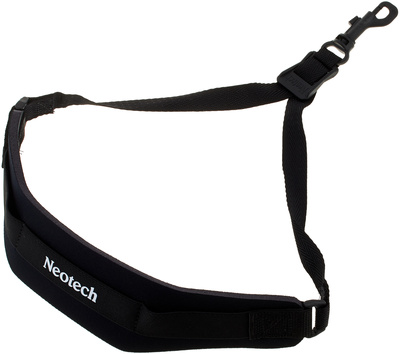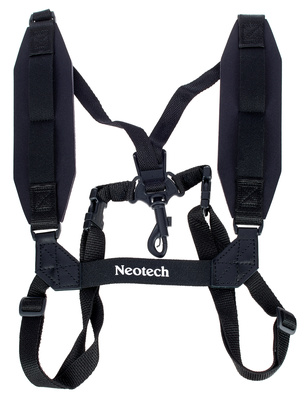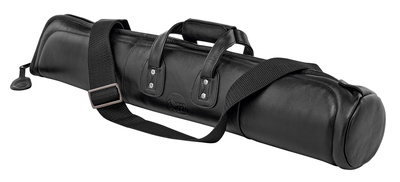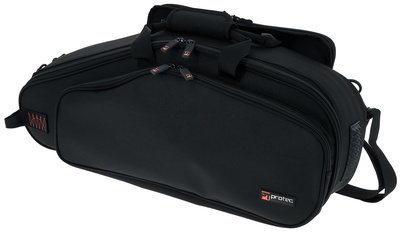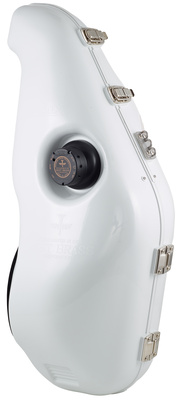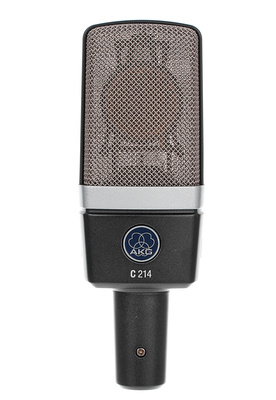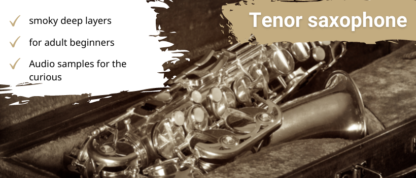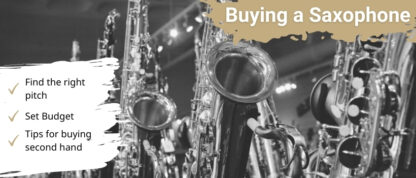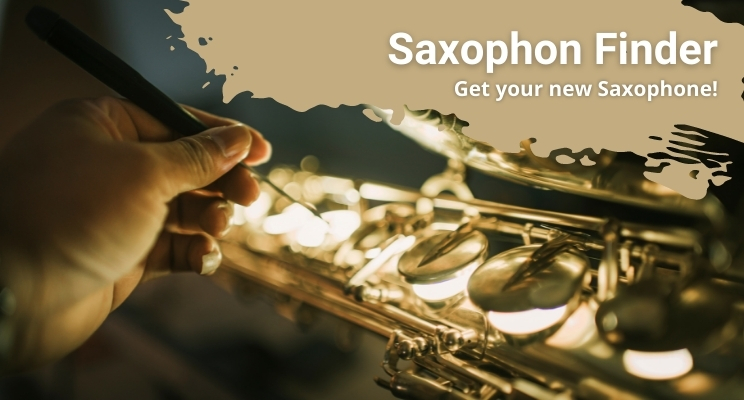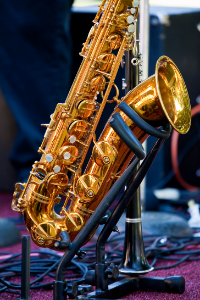
Once you have immersed yourself in the world of saxophone playing, you will soon realise that there is a wide range of saxophone equipment available to make learning the saxophone easier or to adjust, record and dampen the sound of the instrument. In addition, there are practical devices that improve handling and are useful must-haves, especially for beginners. We go through everything with you and show you what you really need and why.
Absolute basic: the saxophone mouthpiece
One of the most important saxophone equipment you need to start playing the instrument is the mouthpiece, because this is what you blow into the instrument. The mouthpiece on the saxophone is modelled on that of the clarinet, is usually made of rubber or a similar material and is open on the underside. On the smooth surface around the opening there is room for a reed, which is attached to it with the help of a reed screw to cover the opening.
This creates a gap-width opening, the size of which determines how easy or difficult it will be to vibrate the reed. A small opening is suitable for beginners, as the reed is easy to move. A large opening is more suitable for advanced players, as they have more power, a larger lung volume and better control of their breath. Mouthpieces are available in different fits for sopranos, alto saxophones and all other types of saxophones. Here is a selection of proven beginner mouthpieces for alto saxophones:
Depending on the manufacturer, the mouthpieces can often be divided into categories between 3 and 7, which are reflected in the designation of the mouthpieces. The opening sizes of the mouthpieces increase analogously. 4 is a good size for beginners, which is why the Yamaha 4C, for example, is one of the most popular mouthpieces. Many people before you have learned to play the saxophone with these mouthpieces.
Saxophone reeds – test saxophone equipment yourself
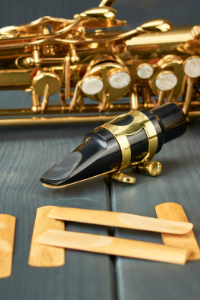
It is not only the distance between the reed and the mouthpiece that determines how easily the reed can be made to vibrate, but of course also its own composition. There are reed thicknesses from 1-5, which indicate the hardness or thickness and flexibility of the wood/reed. Logically, soft reeds with a thickness of 1 vibrate much more easily than harder reeds of 4, which is why less force is needed to produce a first note.
The general rule is that a softer blade is played with a larger hole, because the larger hole already requires more power from the player. However, beginners try to keep the hurdle as low as possible, which is why soft blades are recommended despite very small lane openings; strengths of 2 or a maximum of 3 are therefore ideal.
There are also reeds that are made of wood or reed, but are covered with a plastic film. These specially designed saxophone accessories are designed to last longer so that the wood does not fray so quickly. With proper care, however, simple wooden reeds can also last a long time.
However, opinions about the sound of such reeds vary widely. Some find it a bit buzzy and therefore prefer to rely on shorter-lived wooden reeds. Others like the sound and the fact that they do not have to constantly buy fresh reeds. In the end, it is a matter of personal taste that can only be clarified by trial and error.
A saxophone strap for more stability
If you are just starting to play the saxophone and don’t want to put too much strain on your coordination from playing or keeping your balance, a sling is a good idea. A saxophone brings a certain weight with it, which you first have to get used to. Considering the prices of high-quality instruments, it certainly makes sense to secure yourself and fasten the saxophone in a way that prevents it from breaking. It also makes playing more relaxed, as the instrument is held comfortably at playing height. If you don’t want to strain your neck too much, you can choose a shoulder strap. This distributes the weight more evenly over the player’s upper body.
A case for your new saxophone
One last basic that should never be missing as a saxophone accessory is a case or at least a flexible, well-padded gig bag. Your brand-new, shiny instrument should not be put somewhere indiscriminately, because otherwise it will get scratched or, in the worst case, dented. This not only looks ugly, but is especially a problem if it changes the sound of the saxophone. The air column inside should circulate as smoothly as possible, which is why an intact surface is so important.
Do you need a saxophone stand?
Less important for the beginner’s equipment with saxophone equipment is the saxophone stand. It is useful, especially during longer rehearsals when you only want to put the saxophone down for a short time. Next to the instrument case, the stand is the storage place par excellence for your instrument, as it will certainly not get dented on it and the keys cannot be pressed or minimally bent. Nevertheless, it’s enough if you buy something like this later, it doesn’t have to be purchased immediately.
Saxophone mute – a good idea in rented flats
Admittedly, mutes for the saxophone are quite expensive to buy. You can budget about 500€* for it, which is why it is not a saxophone accessory we would recommend to beginners. Nevertheless, it is a sensible purchase for all those who live in a rented flat and perhaps only have time to rehearse in the evenings.
Basically, it is a soundproof box in which you pack the instrument and on the side of which there are holes so that you can reach the tone holes and keys with your hands. The muffling is really excellent, which means that the sound is only room volume – fortunately without any loss of sound quality, as the instrument can still vibrate freely.
Microphones for the saxophone – for a successful performance
One last popular saxophone accessory that does exactly the opposite as the mutes is the microphone. It amplifies the sound and is especially needed for larger stage performances or for private recordings. Unlike the trumpet, for example, the microphone must be oriented so that it covers the area around the bell as well as the lower part of the bell. Many nuances of the sound also emanate from this, which would be missing if the microphone were only directed at the opening.





